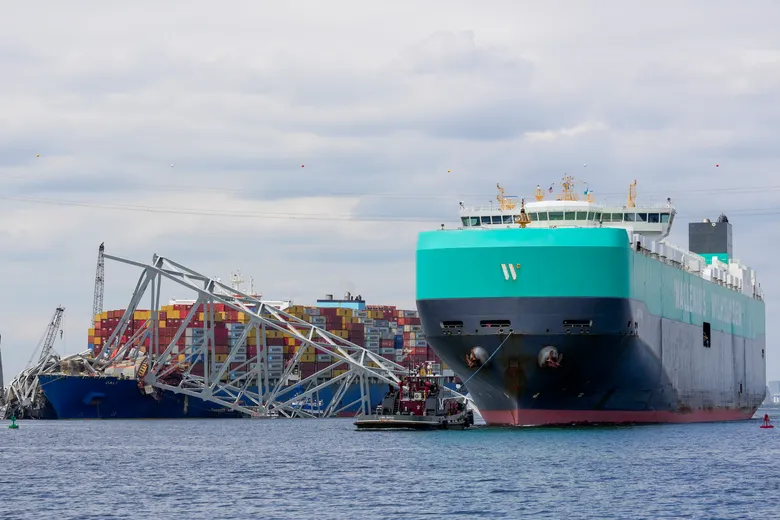
A pivotal milestone was reached in Baltimore on Thursday as the first cargo ship passed through a newly opened deep-water channel, marking a significant step in the recovery efforts following the collapse of the Francis Scott Key Bridge four weeks ago. The bridge’s failure had brought most maritime traffic through the city’s port to a grinding halt.
The Balsa 94, a bulk carrier sailing under the Panamanian flag, was the first to traverse the new 35-foot (12-meter) channel, bound for St. John, Canada. Two more commercial vessels followed suit later in the day, including a vehicle carrier destined for Panama.
These long-awaited voyages signify an important juncture in the ongoing cleanup and recovery operation, as crews have been working around the clock to clear thousands of tons of mangled steel and concrete from the entrance to Baltimore’s harbor.
Five vessels that have been stranded for weeks are expected to finally depart Baltimore through the new, temporary channel. Meanwhile, other ships are scheduled to enter the port, which typically processes more automobiles and farm equipment than any other in the country.
The bridge collapse has had far-reaching economic implications, with thousands of longshoremen, truckers, and small business owners seeing their livelihoods impacted. In response, local and state officials have prioritized reopening the port and restoring its traffic to normal capacity, in hopes of mitigating the economic ripple effects of the incident. Various assistance programs have also been established for unemployed workers and others affected by the closure.
On Thursday morning, the Balsa 94 navigated the channel guided by two tugboats, one at the bow and one at the stern. It glided slowly past the fallen bridge and the grounded Dali, the massive container ship that caused the collapse when it collided with one of the bridge’s support columns.
While portions of the steel span still obstruct other sections of the port’s main channel, which has a controlling depth of 50 feet (15 meters) capable of accommodating some of the largest cargo and cruise ships, the successful passage of the Balsa 94 marks a significant step towards restoring normal operations at the vital maritime hub.
The Balsa 94 is expected to arrive in Canada on Monday.
